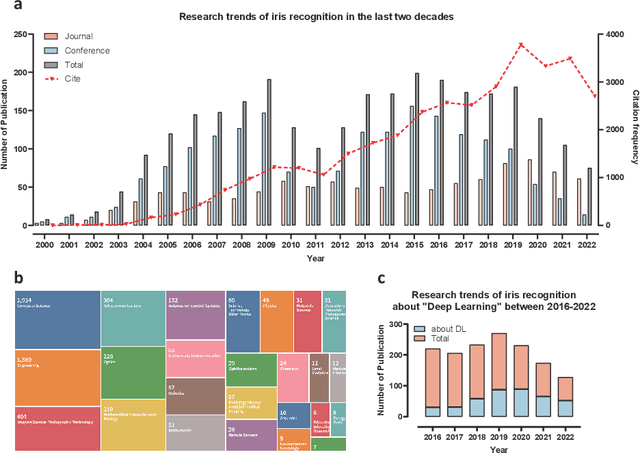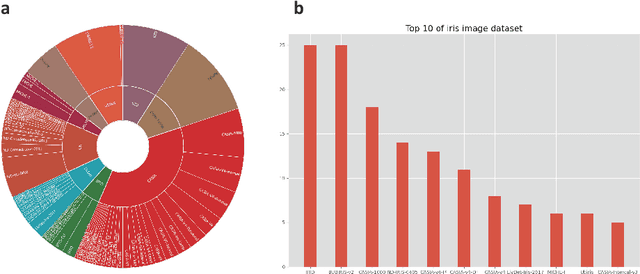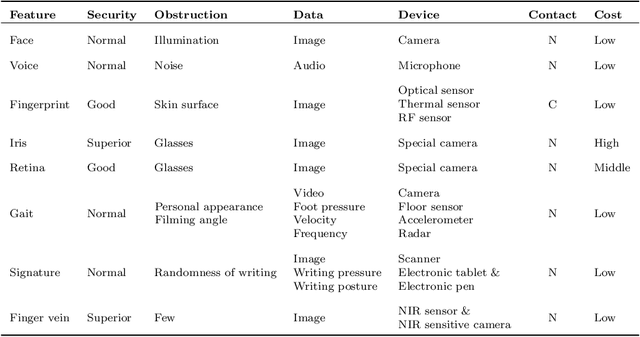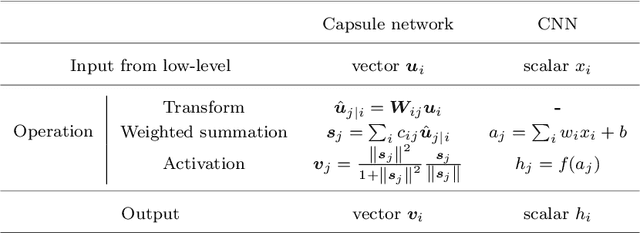Siliang He
Deep Learning for Iris Recognition: A Review
Mar 15, 2023



Abstract:Iris recognition is a secure biometric technology known for its stability and privacy. With no two irises being identical and little change throughout a person's lifetime, iris recognition is considered more reliable and less susceptible to external factors than other biometric recognition methods. Unlike traditional machine learning-based iris recognition methods, deep learning technology does not rely on feature engineering and boasts excellent performance. This paper collects 120 relevant papers to summarize the development of iris recognition based on deep learning. We first introduce the background of iris recognition and the motivation and contribution of this survey. Then, we present the common datasets widely used in iris recognition. After that, we summarize the key tasks involved in the process of iris recognition based on deep learning technology, including identification, segmentation, presentation attack detection, and localization. Finally, we discuss the challenges and potential development of iris recognition. This review provides a comprehensive sight of the research of iris recognition based on deep learning.
Artificial Neural Networks for Finger Vein Recognition: A Survey
Aug 29, 2022



Abstract:Finger vein recognition is an emerging biometric recognition technology. Different from the other biometric features on the body surface, the venous vascular tissue of the fingers is buried deep inside the skin. Due to this advantage, finger vein recognition is highly stable and private. They are almost impossible to be stolen and difficult to interfere with by external conditions. Unlike the finger vein recognition methods based on traditional machine learning, the artificial neural network technique, especially deep learning, it without relying on feature engineering and have superior performance. To summarize the development of finger vein recognition based on artificial neural networks, this paper collects 149 related papers. First, we introduce the background of finger vein recognition and the motivation of this survey. Then, the development history of artificial neural networks and the representative networks on finger vein recognition tasks are introduced. The public datasets that are widely used in finger vein recognition are then described. After that, we summarize the related finger vein recognition tasks based on classical neural networks and deep neural networks, respectively. Finally, the challenges and potential development directions in finger vein recognition are discussed. To our best knowledge, this paper is the first comprehensive survey focusing on finger vein recognition based on artificial neural networks.
 Add to Chrome
Add to Chrome Add to Firefox
Add to Firefox Add to Edge
Add to Edge